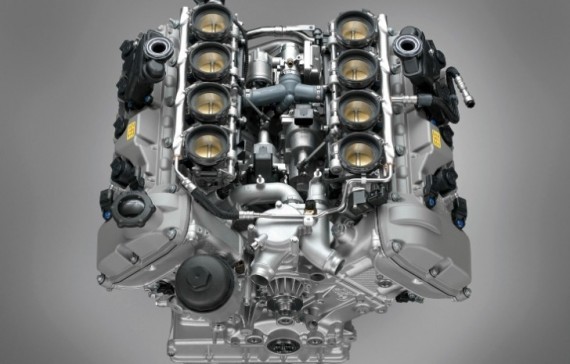 Well, since the debate is so heated up, we can’t really tell you which way to go. If you’re buying, you’ll most likely try to keep the revs down for the first couple hundred of miles or so but if you’re leasing, chances are you’ll be ‘driving like you stole it’ in no time.
Well, since the debate is so heated up, we can’t really tell you which way to go. If you’re buying, you’ll most likely try to keep the revs down for the first couple hundred of miles or so but if you’re leasing, chances are you’ll be ‘driving like you stole it’ in no time.
Engineers and all kinds of people are claiming that you’re safe either way but I, myself, went for a break-in driving mode with my brand new car, just for my peace of mind.
Yet, if those people are right in claiming that the new tech allows us to ignore such driving techniques, why are manufacturers like BMW suggesting that we take it easy?
For example, the M4 has it stipulated in its owner’s manual that for the first 2,000 km or 1,200 miles maximum engine speed should not exceed 5,500 RPM, while the maximum speed is limited to 170 km/h (105 mph). Furthermore, wide-open throttle and kickdowns should be avoided up until the aforementioned numbers show up on your car’s odometer.
What’s more, the recommendations claim that even after that, between 2,000 and 5,000 km (1,200 to 3,100 miles) the engine’s RPM can be increased but you should make sure you don’t travel at speeds over 220 km/h (137 mph) for too long. No exact figures are offered so you’re to decide for yourself what ‘too long’ stands for.
Seeing as some manufacturers still recommend breaking in your engine, we decided to tell you how it’s done. First, let’s make sure everyone understands what breaking in means.
This represents the process in which various components start getting used to each other for the initial hours of their functioning together. Things like the piston rings of the engine and the cylinder walls have to work together for a small while before they can reach optimum levels of performance. The argument of the nay-sayers is that there’s so much precision in today’s industry that this is no longer needed.
Basically, in the past, small bits of metal used to be brushed off or tored off by the initial cycles of the engine because the drilling machines weren’t precise enough, leaving bigger tolerances than today. However, even now, things are not perfect and they will never be. Furthermore, seals need to work on a certain temperature to do their job properly at first, the need to be warmed up a little but the amount of time and the working hours it takes to do so varies a lot. As I said, the debate continues to this day.
Modern engines will take up to 1,000 km on average to get settled in. In the past, that figure would’ve been a lot higher but it’s no longer the case. During this time you could use some pointers, if you just want to keep your peace of mind.Don't floor it!
Keep the revs decent. Now, depending on whether you’re breaking in a diesel or a petrol engine, you’ll need to keep some RPM figures in mind. Usually, diesels rev less than gas engine, that means that if we’re recommending you don’t go over 3,500 RPM on a petrol engine, you should bare in mind that for a diesel that number is lower, maybe around the 2,500 mark. Again, it depends on the engine itself. As a rule of thumb, keep it below the halfway point of zero and the redline.
At the same time, don’t baby the throttle, just be careful not to go over the aforementioned limit too often. While accelerating, do it with confidence, applying wide open throttle from low RPMs.
One of the aims of breaking in an engine is making sure the piston rings seal against the cylinder bores. That is done using gases emitted during running that force the rings outwards. That’s why it is good to provide high pressure initially. Old oil out, new oil in
Change the oil after 100 miles if you can. As I said, the reason while people break in engines is to remove the tolerances in the block. That means there will be small pieces of metal going around in your car’s engine and you should get them out.
Ideally, you should change the oil the car came with after a short period (50-100 miles) and then again when the break-in period is over, at 1,000 miles or so. That way, you’ll make sure the ‘extras’ are gone and you car’s oil is as pure as possible.
While these tips should help you out, as we said, the controversy continues. Today’s engines are usually broken in at the plant, as soon as they’re put together. The manufacturers do this so that they avoid problems within warranty later on, problems that would cost them money and not you.
Therefore, if you want to drive your car the way you want to as soon as you get your hands on it, by all means go ahead. If you want to do the break in yourself, for peace of mind, you might want to take a look at these tips.








